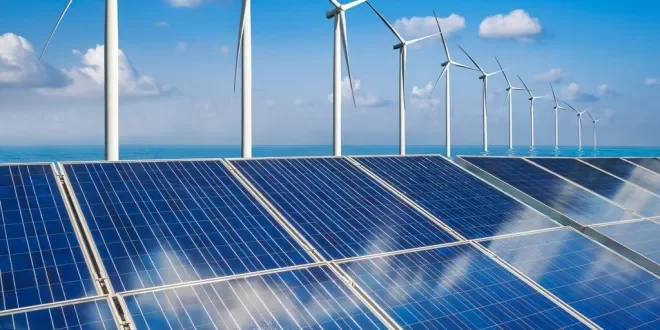With the EU embargo on imports of Russian oil starting in December, Russia will have to find new homes for around 2.4 million barrels per day (bpd) of its crude and refined product exports, which will be banned from entering EU and G7 countries unless the oil is sold at or below a certain price the buyers expect to set.
Even if the price cap mechanism fails to work for the West, as many analysts expect, and even if Russia manages to divert all its previously EU-bound oil exports eastwards to Asia, this would create a shortage in the oil tanker market, sending shipping rates surging further. This would mean elevated oil prices, even for discounted Russian oil because of the high freight rates. Moreover, the available oil tankers not owned or tied to owners from the EU or G7 are simply not enough to handle the massive Russian oil exports, analysts say. The changing trade routes with much longer voyages from Russia’s Baltic and Black Sea ports to Asia – instead of just a week to travel to Europe – would also tie up more tankers on months-long round trips. More vessels would be needed for ship-to-ship transfers from smaller Aframax tankers to very large crude carriers (VLCC) to ship the oil from ports very close to Europe all the way to Asia.
Shipping Constraints
While very bullish for the tanker owners and freight rates, the biggest oil trade shift in recent memory would create additional headaches for buyers amid lower tanker availability and higher prices due to a surge in shipping rates.
The re-routing of Russian crude from West to East would put a strain on the shipping sector, Giovanni Serio, Global Head of Research at the world’s largest independent oil trader, Vitol, said this week.
The average Asia-bound route of at least 21 days is triple the Europe-bound voyage, which will result in almost a 3% rise in shipping activity measured in ton-miles, Serio said at the APPEC oil conference in Singapore, as carried by Reuters.
Traders will face challenges in finding Aframaxes to load oil from Russian ports, Vitol’s executive added.
“There is already a lot of incentive to switch the ship size from Aframax into Vs (Very Large Crude Carriers) that are going to be more available,” Serio said, but noted that VLCCs will need to be loaded via ship-to-ship transfers to load crude or products from smaller vessels.
Price Cap ‘Minefield’
In another hurdle for oil shipping after the EU embargo and the price cap enter into force in December, traders and insurers aren’t really sure how the price cap mechanism would work and how much oil flows could be affected.
“We need buy-in from governments, and governments to guide us because it’s a bit of a minefield,” Vitol’s chief executive Russell Hardy told the APPEC conference, as carried by Bloomberg.Related: Xi Is Set To Be Re-Elected As China’s Leader
Vitol will carefully assess the price cap developments “before we decide exactly what we think is right for Vitol,” Hardy added.
Vitol’s Serio noted that capping the price of Russian oil but allowing it to flow would be a “potential relief valve” for the global oil market.
Of course, if Putin makes good on his promise to halt all energy supply—including crude, fuels, natural gas, and coal—to the countries that sign up to cap the price of Russian oil, “Russian oil will have to sail on non-Western tankers – and there aren’t enough vessels to handle Russia’s millions of barrels,” according to Energy Intelligence.
Finding tankers and insurance coverage not linked to the EU, the G7, or other countries that may join the price cap mechanism for the amount of oil Russia exports could be next to impossible.
Reports have already emerged that India, which has been buying large volumes of Russian crude since the Russian invasion of Ukraine to take advantage of cheap oil, is set to slow purchases of the Russian oil this month and look to more African and Middle Eastern supply as shipping rates on longer voyages have jumped.
After the EU embargo enters into force, India and China in theory could absorb additional Russian oil, but the banking sector would be wary of secondary sanctions from the U.S., and this could cap Russia’s ability to export oil, Amrita Sen, founder and director of research at Energy Aspects, told Bloomberg television in an interview last week. In addition, Russia tying up a lot of oil on ships to Asia and then finding buyers would further raise freight rates, she added.
Oil Transportation Bottlenecks?
Europe-based major tanker owner and oil transportation services provider Frontline said in a presentation at the Pareto Conference this month that volumes of oil in transit continue to grow to unseasonably high volumes. The tanker market is now a “ton-mile story” as the Russian invasion of Ukraine is displacing crude and products trade flows, with “highly inefficient trading patterns developing.”
Global crude oil exports are approaching pre-Covid levels, while product flows and oil in transit are already there, Frontline said, adding that order books continue to dwindle, and there are no incentives to invest in new tanker capacity, yet.
This could be the start of structural bottlenecks in oil transportation to come, the tanker fleet owner said.
By Tsvetana Paraskova for Oilprice.com
![]()




